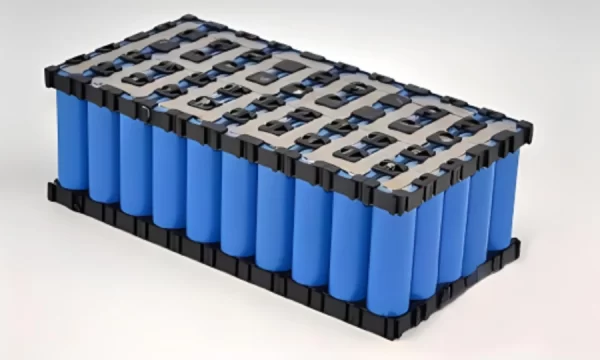Part 1. What is a lithium iron phosphate battery?
LiFePO4 battery (LiFePO4, referred to as LFP) refers to a lithium-ion battery using lithium iron phosphate as the cathode material. Its working principle is the same as that of lithium-ion batteries.
The physical structure of LiFePO4 is olivine structure. Its characteristics are that it does not contain precious elements, the price of raw materials is low, and the resources of phosphorus, iron, and lithium are abundant on the earth, so there will be no major problems in the supply of materials. In addition to the common characteristics of lithium batteries, the lifepo4 battery has some unique advantages. For example, it has a moderate working voltage (3.2V), large capacity (170mAh/g), high discharge power, fast charging and long cycle life, and high stability in high temperature and high thermal environments.

Part 2. LiFePO4 battery type
LiFePO4 lithium batteries have different types according to the outer packaging of the battery core. The battery cells of LiFePO4 batteries are divided into cylindrical steel shells, soft aluminum plastic film, and square aluminum shells. Therefore, most of the lithium iron phosphate battery models that can be seen on the market are these three battery cell models. Of course, the battery cells are made of many battery models and specifications for battery packs.
Below is a brief introduction to these three types of lifepo4 lithium batteries.
Cylindrical Battery
The battery models found in Cylindrical batteries include A, AA, AAA, C, D, F, etc. The most common and used specification of a Cylindrical battery is an 18650 battery. 18650 batteries are commonly expressed as letters on the battery surface: ICR18650, 3.2V, 2800mAh.
The numbers 18650 represent the external dimensions of the battery. 18 refers to the battery diameter of 18.0mm, and 650 refers to the battery height of 65.0mm. Due to differences in battery manufacturers’ production process levels and methods, there is a certain difference in size, and the error is approximately ±0.02mm.
Advantages and disadvantages of Cylindrical battery
Cylindrical battery hard shell packaging has high reliability. The advantages are high battery consistency, mature technology, low cost, and good battery product yield and heat dissipation performance. However, the disadvantage of a cylindrical battery is that the heat dissipation design is difficult after grouping, and the system energy density is low.
Prismatic Battery
LiFePO4 prismatic batteries are mostly used in new energy vehicle batteries and energy storage battery packs. LiFePO4 prismatic battery models are mostly expressed in thickness, width, and length. For example, 60Ah, 3.2V, 30-135-220; 70Ah, 3.2V, 30-135-222 represent the same thickness of 30mm, width of 135mm, length of 220mm and 222mm, respectively, the voltage of 3.2V, and capacity There are two models of battery cells, 60Ah and 70Ah respectively.
Except for the different sizes and capacities, the nominal voltage of the LiFePO4 prismatic battery is 3.2V.
Prismatic Battery Advantages and Disadvantages
The advantages of the Prismatic battery are high packaging reliability, simple structure, high single energy density, high system grouping efficiency, and relatively good stability. The disadvantages are that there are many models, the process is difficult to unify, and the individual cells are very different, which makes the system lifespan lower than that of a single battery.
Soft Pack Battery
For the LiFePO4 soft pack battery, the appearance is freer; it can be triangular, square, circular, arc, etc. Therefore, the LiFePO4 soft pack battery models will be complex and diverse. Different battery manufacturers have different models and specifications. Therefore, most of these batteries are customized battery cells. But its nominal voltage is also 3.2V, determined by the lithium iron phosphate battery’s material characteristics.
Therefore, if you want to find a suitable ready-made battery cell model, it is generally difficult. Still, you can find battery manufacturers who customize it according to your needs.
Soft Pack Battery Advantages and Disadvantages
Soft pack battery is packaged in aluminum plastic film. Its advantages are high energy density, a small internal battery pack, and long cycle life. The disadvantages are that high-end aluminum-plastic films have higher costs, low production efficiency, and low yield rates.
Part 3. LiFePO4 battery life
The life of lithium iron phosphate batteries depends on the number of charge and discharge cycles. Like ternary lithium batteries, lithium iron phosphate batteries can also be used for more than 2,000 charge and discharge cycles.
Lithium-iron phosphate batteries will have different discharge rates under different environments. The minimum discharge rate can reach 0.5c, and the maximum discharge rate can reach 10c. Regardless of the discharge rate of this battery, it will be very flat during the discharge process. Generally speaking, the voltage is very stable, almost remaining unchanged. Only when the lithium iron phosphate battery is nearing the end of discharge will you find that it will experience a sharp decline?
Of course, the actual service life of the LiFePO4 battery is also related to usage and daily maintenance. For example, the performance of batteries in low temperature environments will be poor. Therefore, if used in colder areas in the north for a long time, lithium iron phosphate batteries will decay faster than in the south.
Part 4. Cost of lithium iron phosphate battery
The positive electrode, negative electrode, electrolyte, lithium battery copper foil, and separator are the main direct materials of lithium batteries.
1. Cost of cathode materials
The cathode material is the most important material cost, accounting for about 55%. Lithium-ion batteries are mainly divided into lithium iron phosphate batteries and ternary batteries based on different cathode materials, and power batteries include both.
2. Cost of negative electrode materials
Anode materials account for about 14% of the total cost, including artificial graphite and natural graphite. Artificial graphite can be used in power batteries and energy storage batteries. In contrast, natural graphite is mostly used in consumer batteries.
3. Electrolyte cost
The electrolyte accounts for about 13% of the total cost, and its main components are solutes, solvents, and additives. Solutes include LiPF6 and the new lithium salt LiFSI, the main cost sources. Solvents are mainly cyclic and chain carbonates, including PC, EC, DMC, DEC EMC, etc. Additives are mainly used for film formation, overcharge protection, low temperature resistance, flame retardancy, magnification improvement, etc. Common products include VC, FEC, PS, LiBOB, DTD, LiDFOB, etc.
4. Lithium battery copper foil cost
Lithium battery copper foil is electrolytic copper foil, which accounts for about 8% of the cost. Lithium battery copper foil is used for lithium battery negative electrode current collector.
5. Diaphragm cost
Separators account for 4% of the total material cost and are divided into wet separators and dry separators. The main cost of wet separators is PE, and the main component of dry separators is PP.
Part 5. Summary
Lithium iron phosphate batteries are safe, have long cycle life, have abundant metal resource reserves, are low-cost and environmentally friendly, and have become the main choice for energy storage batteries. In the future, it will develop towards high compaction, low-temperature performance, and high energy density. It will be applied to more application scenarios.
Part 6. FAQs
-
How long will a LiFePO4 battery last?
Conventional LiFePO4 Battery can support more than 2000 cycles of use. One cycle of use equals a complete charge and discharge process, so under normal conditions, lithium iron phosphate batteries can be used for 3-5 years without replacement. And because of the low self-discharge rate and weak attenuation of lithium batteries, the battery will not decay significantly after 1-2 years of use. -
What are the disadvantages of LiFePO4?
LiFePO4 battery also has its shortcomings, such as poor low-temperature performance, low tap density, and compaction density. The volume of lithium iron phosphate batteries of the same capacity is larger than that of lithium-ion batteries such as lithium cobalt oxide. Therefore, the LiFePO4 battery does not have an advantage over micro batteries. -
Can a lithium battery last 15 years?
The lifespan of a lithium battery can vary depending on usage and conditions. While 15 years is possible, it depends on factors like depth of discharge, operating temperature, and maintenance. -
Is LiFePO4 better than lithium-ion?
Yes, LiFePO4 (Lithium Iron Phosphate) batteries generally offer several advantages over traditional lithium-ion batteries. LiFePO4 batteries have better thermal stability, longer lifespan, enhanced safety features, and a higher tolerance for high discharge rates. However, it’s important to note that the choice between LiFePO4 and other lithium-ion chemistries depends on specific application requirements and trade-offs, such as energy density and cost. -
Why is LiFePO4 so expensive?
LiFePO4 batteries have advantages over traditional lithium-ion batteries, such as better thermal stability, longer lifespan, and enhanced safety features. However, they may be more expensive due to the higher cost of manufacturing materials and production processes involved.
Related Tags:
More Articles

Overview of Deep Cycle Lithium Battery
In this article, we explore the life, voltage, capacity, and charging considerations of deep cycle lithium batteries.
How Long do Lithium Batteries Last?
How long do lithium batteries last? we will explore the factors that influence the lifespan of lithium batteries and provide insights into their longevity.
How to Choose the Best LiFePO4 Battery?
Choose LiFePO4 batteries for superior performance, safety, and versatility in EVs, UPS, and backup power. This guide helps you make informed decisions.
Get 12v Lithium Car Battery As a Power Source for the Ride
Make the right choice for your vehicle's battery needs by installing a 12 volt lithium car battery. You will enjoy maintenance-free longevity with this change.
Everything About A Small Lithium Ion Battery
Discover the features, uses & future potential of a small lithium ion battery. A compact and tiny powerhouse ideal for smartphones, wearables, drones & more.





